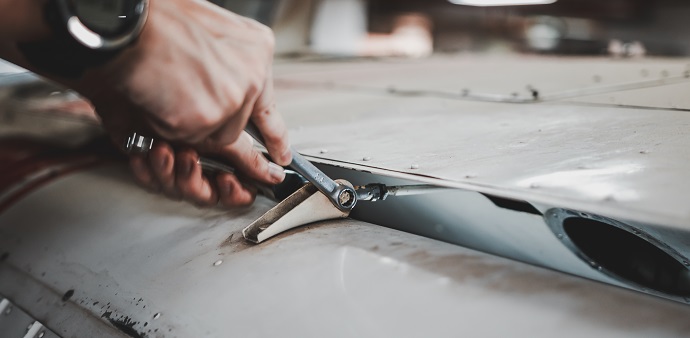A review by Sofema Aviation Services www.sassofia.com
Introduction
Auditing key elements of the Stores & Tooling Calibration Process (We can also include the management of equipment within the hanger environment as badly managed equipment can easily become a hazard to the aircraft)
Starting with an understanding of the Maintenance Organisation Procedures and to Gap analyse to determine that the procedure is fully compliant with AMC 145.40 (b), the maintenance organisation shall ensure that “all tools, equipment and particularly test equipment, as appropriate, are controlled and calibrated according to an officially recognized standard at a frequency to ensure serviceability and accuracy”.
Points to Review During the Audit:
a) In order to comply with the regulatory requirement, the maintenance organisation shall, for any tooling in use, identify the related inspection/service/calibration needs. – how is this evidenced?
This “tooling inspection/service/calibration need evaluation” must be carried out at any application for initial or extension of approval or each time a certain type of tooling (P/N) is entering the maintenance organisation for the first time.
This includes tooling that is infrequently used and leased or loaned by the maintenance organisation in order to ensure their availability at the time the maintenance is to be performed.
This will allow the maintenance organisation to ensure/demonstrate that the need for inspection, service and calibration for the tooling required to perform the intended scope of work has been considered.
Regarding Tooling
Within the store we will typically have 2 types of tooling:
Standard tooling – non-specific and commercially available
Task-specific tooling – typically identified within maintenance data in respect of Aircraft / Engine / Component / NDT / etc.
It is the responsibility of the end-user (Competence related pre-requisite) to ensure the correct standard tool or equipment item is selected in respect of each specific task
i) Who is doing this?
ii) Against what Criteria?
iii) Is the process effective documented, managed and appropriate competence ensured – all elements to be checked during the audit.
Note that for a given standard tool it is possible for the maintenance organisation to decide to implement an equivalent tool to meet a particular requirement.
When dealing with “task-specific tooling”, the maintenance organisation may proceed according to primary or alternate tooling specified in the maintenance data – Audit of the Alternate tooling management procedure (Audit Elements as Above)
Or may use alternate tooling when an approved process in place (Only when this possibility is given in the maintenance data)
Or when approved data is available (maybe the applicable TCH, STCH, OEM or the tool manufacturer which is specified in the maintenance data of the product or component being maintained).
In the case that no technical documentation is available engineering judgement using a risk-based assessment may be used on a case by case basis.
Tooling Management Criteria
The main driver for establishing in which group a certain tooling should be entered depends on the applicable requirements defining the serviceability. The tooling control processes are typically classified in the following groups having different control requirements in order to establish serviceability:
On Condition – Tooling which requires a visual inspection prior to each use.
Service – Tooling which usually requires a visual inspection prior to each use or servicing at established frequency.
Calibration – A visual inspection prior to each use, and calibration at an established frequency and, when applicable, servicing. (This information is normally given by the tooling manufacturer instructions when published)
Note – In the absence of such data, it is the responsibility of the maintenance organisation to retrieve the necessary documentation (i.e. by the tooling manufacturer, a calibration agency, etc.).
Typical Tooling Control Management System consists of:
a) Incoming inspection
b) Control register
c) Identification (labelling system)
d) An ongoing serviceability monitoring process
All Elements to be documented, managed, controlled and competence assessed.
Please see the following link https://sassofia.com/aviation-quality/
For additional information please see www.sassofia.com or email office@sassofia.com
Tags:
EASA / GCAA, Base Maintenance Audits, Advanced Techniques for Auditing, Stores and Tool Calibration




